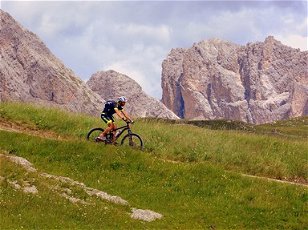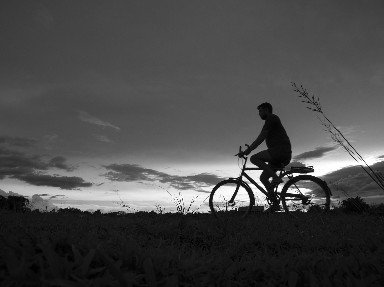21. Bicycles have also been customised and specialised to fit a particular niche or purpose. Reducing strain on the neck and back in comparison to a regular bicycle, which type of bicycle places its rider in a laid-back position?
From Quiz Show Us Your Bike!
Answer:
Recumbent bicycle
As the name suggests, the recumbent bicycle involves lying back somewhat. It uses different muscles to regular cycling due to the altered body position, and is more aerodynamic than a regular bicycle as there is less drag on the body. In addition, the proximity to the ground also reduces the likelihood of a harmful fall. A weakness of recumbents is that they can be hard to steer and manoeuvre, especially around sharp corners.
With a heavy frame and wide tyres, cruiser bicycles are heavier and slower than average, but provide a comfortable ride. They're ideal for someone who wants to focus on the recreational aspect of cycling more than the speed, and were highly popular in the 1930s to 1950s.
Mountain bicycles are durable for off-road cycling and often have suspension, which usually consists of a shock-absorber. This helps keep at least one tyre on the ground, useful for efficient and safe travel over bumpy terrain. Some mountain bikes are more specialised to certain terrain than others, however, so the particular niche role required needs to be taken into account when purchasing one.
The cross bicycle is a hybrid bike which brings flat handlebars to a racing-style bike. In addition the wheels tend to be slightly larger and have wider tires, giving a more general-purpose function to the bike but still maintaining some good potential for speed.
 Things don't need to get worse, but for some cyclists, bikers, and mountain riders, the thrill is in the difficulty. In this quiz, we visit ten of the most dangerous bike trails in the world. You're in for the ride of a lifetime!
Things don't need to get worse, but for some cyclists, bikers, and mountain riders, the thrill is in the difficulty. In this quiz, we visit ten of the most dangerous bike trails in the world. You're in for the ride of a lifetime! 





 = Top 5% Rated Quiz,
= Top 5% Rated Quiz,
 A Well Rated Quiz
A Well Rated Quiz